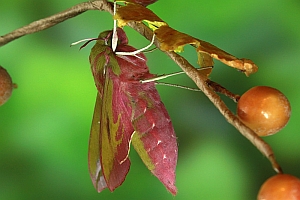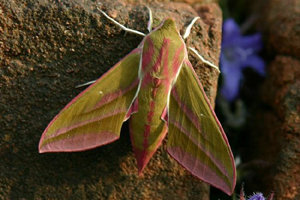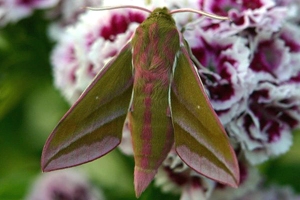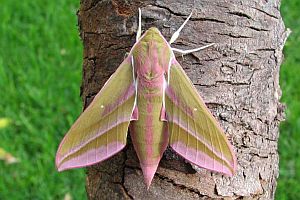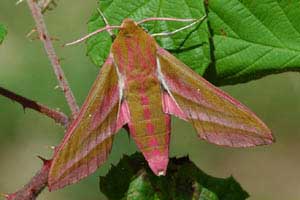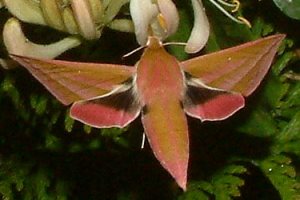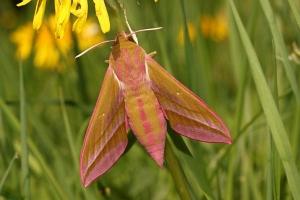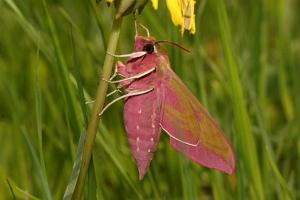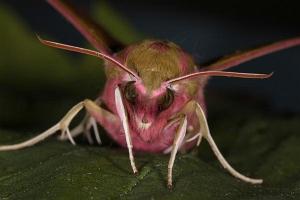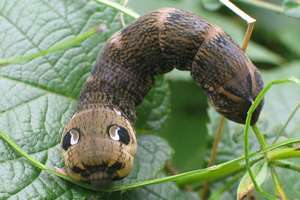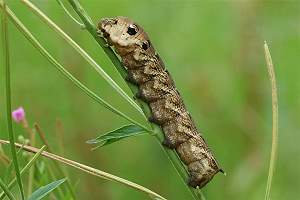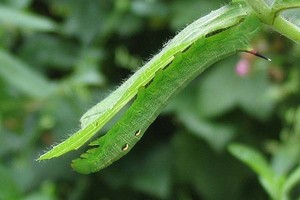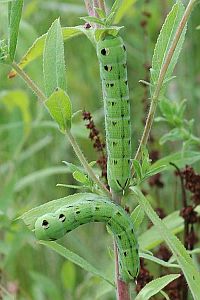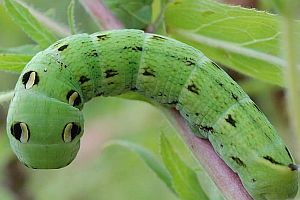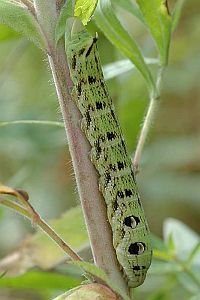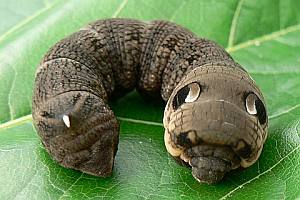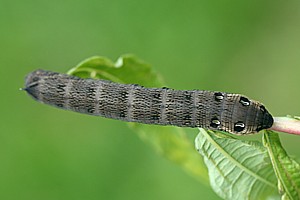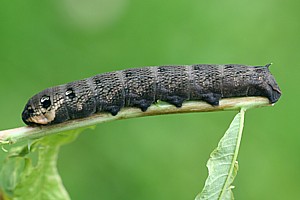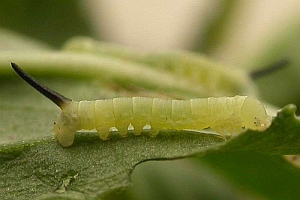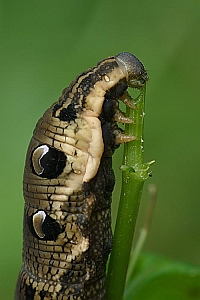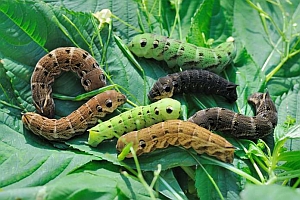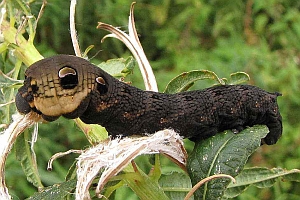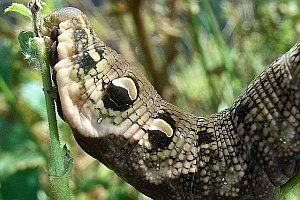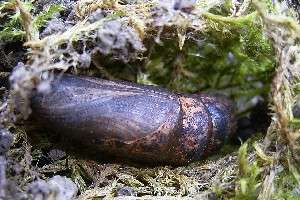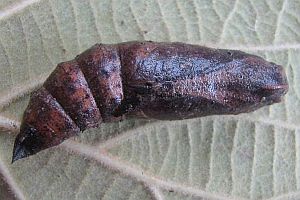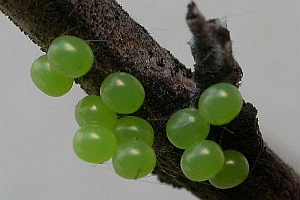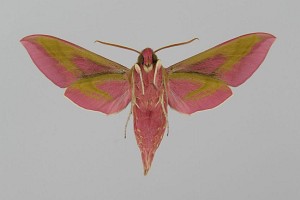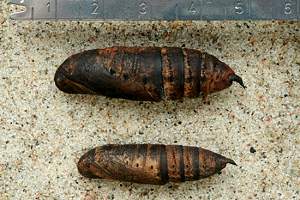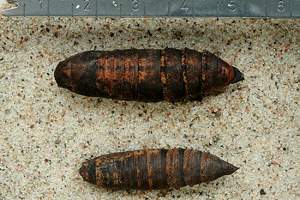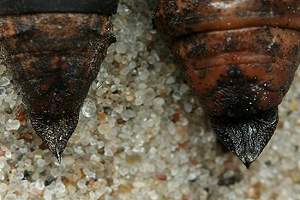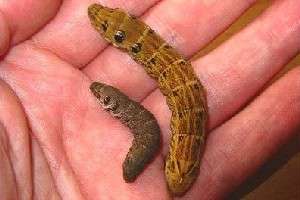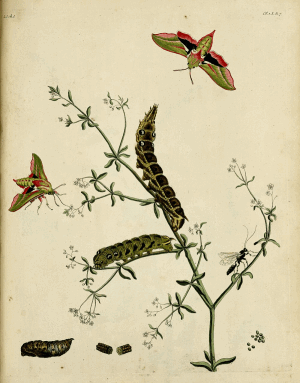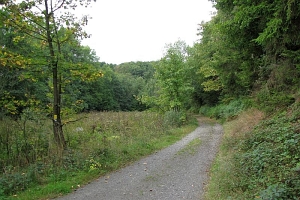Version 75 / 82 vom 28. August 2021 um 20:34:28 von Tina Schulz: Raupe 16.
Falter und Raupe von Frühjahr bis Herbst. Raupe hauptsächlich an Weidenröschen (Epilobium sp.), Blutweiderich (Lythrum sp.) und Springkraut (Impatiens sp.), Puppe überwintert.
Länder:

 +50Kontinente:EUAS
+50Kontinente:EUAS


 +50Kontinente:EUAS
+50Kontinente:EUAS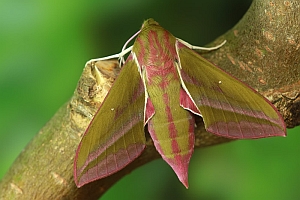
Falter
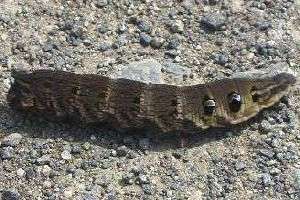
Raupe
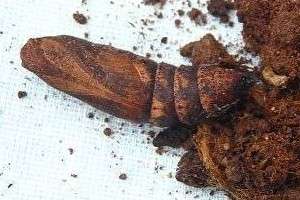
Puppe
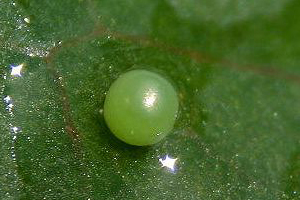
Ei

Männchen
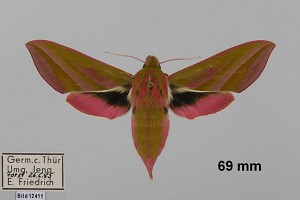
Weibchen
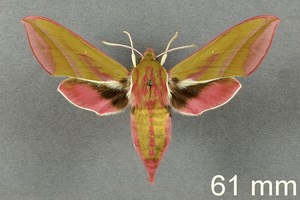
Geschlecht nicht bestimmt
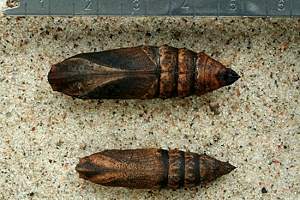
Puppe
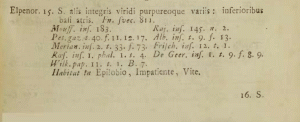
Erstbeschreibung
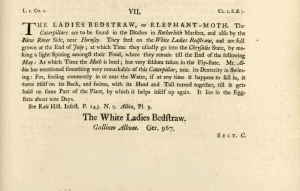
Bezug der Indikation „Wilk. pap. 11. t. 1. B. 7.“
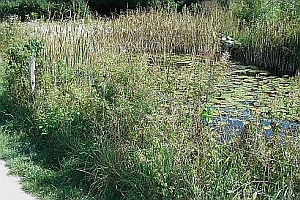
Habitat

Prädatoren
Inhalt
1. Falter
1-2: Deutschland, Hamburg-Garstedt, Raupe an Impatiens glandulifera 12. September 2009, e.l. 30. Juni 2010 (det., cult. & Studiofotos: Renate Ridley)Forum
3: (Foto: Walter Schön)Forum
4-5: ♀ & ♂, Deutschland, Bremen, Bremerhaven, Garten am Waldrand, 18. Juni 2006 (Zuchtfoto: Carsten Wilkening), det. Carsten WilkeningForum
6: Deutschland, Baden-Württemberg, Pfaffenweiler, e.p. 12. Juni 2007 (Foto: Siegfried Rudolf), det. Siegfried RudolfForum
7: Deutschland, Rheinland-Pfalz, Mosel, Landkern, Camping Altes Forsthaus, 13. Juli 2008, ans Licht, (Studiofoto: 14. Juli 2008, Allan Liosi) det. Allan LiosiForum
8: Deutschland, Rheinland-Pfalz, 56479 Westernohe, 435 m, 17. Juni 2009 (Freilandfoto: Rainer Roth), det. Rainer RothForum
9: Deutschland, Saarland, Saarbrücken, eigener Garten (baum- und buschreiche Umgebung - Wohngebiet am Stadtrand), am Licht, 248 m, 9. Juli 2013 (det. & fot.: Silke Balzert)Forum
10-12: Deutschland, Bayern, Unterallgäu, Memmingen-Dickenreishausen, Raupen im Garten und am Waldrand, Augst 2013, e.l. Ende April 2014 (cult., det. & fot.: Peter Schmidt)Forum
2. Raupe
1: Deutschland, Bayern, Unterfranken, Ebern, 13. Juli 2005 (Fotos: Justus Vogt), det. Justus Vogt, conf. Claudia MechForum
2: Deutschland, Bayern, Oberbayern, Schneizlreuth, 27. August 2005 (Foto: Martina Katholnig), det. Martina Katholnig
3: Niederlande, Zuid Flevoland, 28. Juli 2005 (Foto: Allan Liosi), det. Allan Liosi
4: Jungraupe, 2cm, Deutschland, Rheinland-Pfalz, Westerwald, Montabaur, Hausgarten an Epilobium hirsutum, 16. Juli 2003 (Freilandfoto: Rainer Wendt)
5-7: Österreich, Steiermark, Tillmitsch, 12. Juli 2006 (Fotos: Leo Kuzmits), det. Leo KuzmitsForum
8: Deutschland, Niedersachsen, Alt Garge an der Elbe, 30. Juli 2006 (Foto: Hannelore Müller-Scherz), det. Markus KnustForum
9-10: Deutschland, Thüringen, Röttersdorf, leg. Heiko Weinert, 19. Juli 2008 (Studiofotos: Jens Philipp), det. Jens Philipp
11: Eiraupe, Deutschland, Bayern, Unterfranken, Gde. Karsbach, 230 m, 23. Juni 2010 (det. & Studiofoto: Klaus Nowak)Forum
12: Deutschland, Brandenburg, Hennigsdorf bei Berlin, Mischwald, an Springkraut, 5. September 2010 (Foto: Pia Wesenberg)Forum
13: Deutschland, Bayern, Nähe Landsberg am Lech, mitten im Gartenteich auf Wasserklee, 11. August 2010 (det. & fot.: Franz Prelicz)Forum
14: Deutschland, Schleswig-Holstein, Heide, 11 m, Feldweg, auf Weidenröschen, 5. September 2011 (det. & fot.: Susann Kahlcke)Forum
15: Schweiz, Basel Riehen, 260 m, an Weidenröschen (Epilobium spec.), 19. September 2010 (det. & fot.: Florian Nantscheff)Forum
16: an Impatiens glandulifera (Indisches Springkraut): Deutschland, Baden-Württemberg, Dunningen Seedorf, Waldweg im Tannenforst mit reich bewachsenem breitem Randbereich und Laubbäumen, 730 m, 27. August 2021, Tagfund (Freilandfoto: Martin Rother)Forum
3. Puppe
1: Deutschland, Bayern, Unterfranken, Ebern, e.l. 19./20. Juli 2005 (Fotos: Justus Vogt), det. Justus VogtForum
2: (Foto: Walter Schön)
3: Fundort unbekannt, e.l. September 2005 (Foto: Markus Knust), det. Markus Knust
4: Daten siehe Falterbild 6, bei Gartenarbeiten gefunden, 10. November 2006 (Foto: Siegfried Rudolf), det. Siegfried RudolfForum
5. Diagnose
5.1. Falter
5.1.1. Männchen
5.1.2. Weibchen
5.1.3. Geschlecht nicht bestimmt
1: Deutschland, Baden-Württemberg, 75203 Königsbach, 190 m, (Treibzucht ), e.l. 18. Januar 1961 (cult., det. & Foto: Hans-Peter Deuring)
5.2. Puppe
1-5: (1-3: oben), (4-5: rechts, ♂), von D. elpenor: Dänemark, Møn, Liselund Slot, Schlossteich, leg. Raupe an Epilobium hirsutum 26. August 2007Forum
1-3 unten und 4-5 links, ♀ von D. porcellus: Deutschland, Sachsen, Pirna, Radwegrand, leg.Raupe an Galium mollugo 27. Juli 2007 (Studiofotos am 5. und 9. [Bild 5] Oktober 2007: Franziska Bauer), cult. & det. Franziska Bauer
5.3. Raupe
D. porcellus (links) und D. elpenor (rechts): Deutschland, Bayern, Unterfranken, Ebern, 18. August 2005 (Fotos: Justus Vogt), det. Justus Vogt [Forum]
5.4. Erstbeschreibung
1: Linnaeus (1758: 491) [nach Copyright-freiem Scan auf www.biodiversitylibrary.org]
5.5. Bezug der Indikation „Wilk. pap. 11. t. 1. B. 7.“
1-2: Wilkes ([1749]: 11, Cl. 1. S. B. 7) [nach Scans des Göttinger Digitalisierungszentrums [GDZ] mit schriftlicher Genehmigung des GDZ. Besitzerin der Vorlage: Niedersächsische Staats- und Universitätsbibliothek]
6. Biologie
6.1. Habitat
1: an diesem besonnten Teichufer mit Weidenröschen (Epilobium spec.) fand ich zwei Raupen. Die häufige Raupe ist nicht nur an offenen besonnten Stellen wie dieser zu finden, sondern auch in Wäldern an eher schattigen Stellen, dort z.B. auch am Indischen Springkraut: Schweiz, Basel Riehen, 270 m, 19. September 2010 (Foto: Florian Nantscheff)Forum
2: Falter am Licht und eine Raupe verpuppungsreif über den Weg laufend, Deutschland, Nordrhein-Westfalen, Oberbergischer Kreis, Reichshof, Dreschhauser Bachtal/Thalsiefen, 330 m, 19. Juni 2013 (fot.: Klaus Meyer)Forum
3: Fundort von verpuppungsreifer Raupe, Deutschland, Niedersachsen, Umgebung Apelern, feuchter Graben mit Epilobium sp. (Weidenröschen), 110 m, 16. August 2013 (Foto: Tina Schulz)
4: Larvalhabitat, Deutschland, Niedersachsen, Region Hannover, Sehnde, Zweigkanal Hildesheim, 75 m, 6. August 2017 (Foto: Tina Schulz)Forum
6.2. Prädatoren
1: Mausspinne Drassodes lapidosus: Österreich, Burgenland, Jennersdorf, im Garten, 322 m, 25. Mai 2019, Nachtfund (Freilandfoto: Cornelia Niemetz), det. Falter Cornelia Niemetz, det. Spinne Jürgen PetersForum
7. Weitere Informationen
7.1. Etymologie (Namenserklärung)
„ein Gefährte des Odysseus, von Circe in ein Schwein verwandelt.“
7.2. Andere Kombinationen
- Sphinx elpenor Linnaeus, 1758 [Originalkombination]
7.3. Synonyme
- Sphinx porcus Retzius, 1783
- Elpenor vitis Oken, 1815
- Chaerocampa lewisii Butler, 1875
- Deilephila cinerescens (Newnham, 1900)
- Deilephila clara (Tutt, 1904)
- Deilephila obsoleta (Tutt, 1904)
- Deilephila pallida (Tutt, 1904)
- Deilephila unicolor (Tutt, 1904)
- Deilephila virgata (Tutt, 1904)
- Deilephila vautrini (Austaut, 1907)
- Deilephila daubi (Niepelt, 1908)
- Deilephila hades (Rebel, 1910)
- Deilephila alboradiata (Lambillion, 1913)
- Deilephila philipsi Niepelt, 1921
- Deilephila scheiderbaueri (Gschwandner, 1924)
- Deilephila lugens (Niepelt, 1926)
- Deilephila argentea Burrau, 1950
- Deilephila szechuana (Chu & Wang, 1980)
- Deilephila tristis Lempke & Stolk, 1986
7.4. Unterarten
- Deilephila elpenor macromera (Butler, 1875)
7.5. Literatur
- Erstbeschreibung: Linnaeus, C. (1758): Systema naturae per regna tria naturae, secundum classes, ordines, genera, species, cum characteribus, differentiis, synonymis, locis. Tomus I. Editio decima, reformata. 1-824. Holmiae (Laurentius Salvius).
- Pleisch, E. (1997): Deilephila elpenor. — In: Pro Natura – Schweizerischer Bund für Naturschutz (Hrsg.) (1997): Schmetterlinge und ihre Lebensräume. Arten, Gefährdung, Schutz. Schweiz und angrenzende Gebiete. Band 2: 568-570. Egg (Fotorotar AG).
- Bezug einer Indikation in der Erstbeschreibung: Wilkes, B. [1749]: The English Moths and Butterflies : Together with The Plants, Flowers, and Fruits whereon they Feed, and are usualle Found. All Drawn and Coloured in such a Manner, as to represent their several beautiful Appearances, Being copied exactly from the Subjects themselves, and Painted on the best Atlas Paper. Together with an Attempt towards a Natural History of the said Moths and Butterflies: 24 unpaginated pages, 1-63, 120 pl. London (Benjamin Wilkes).
















































